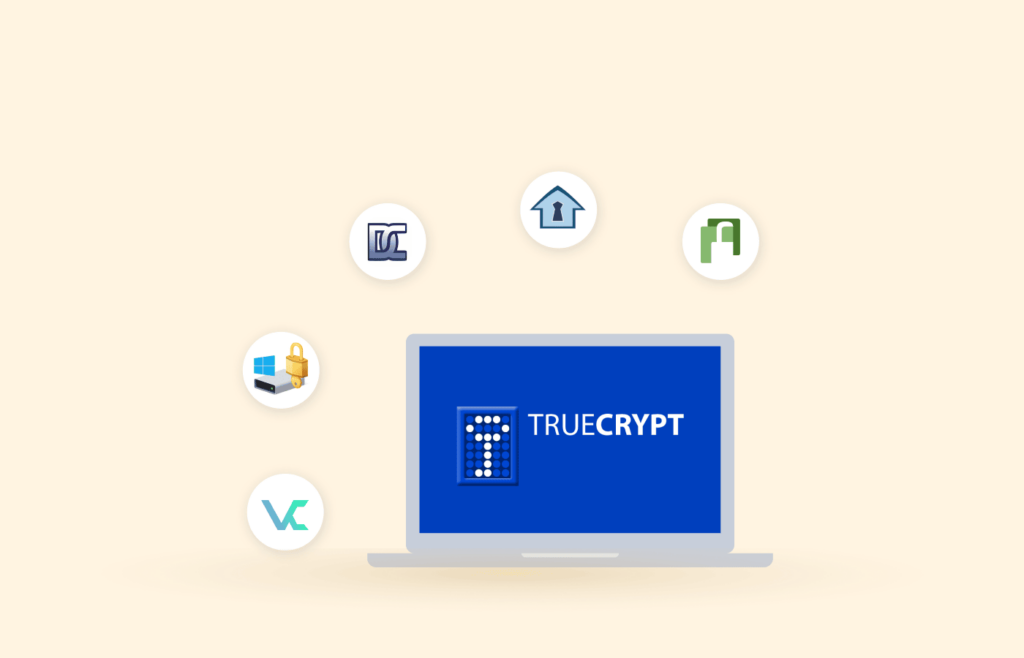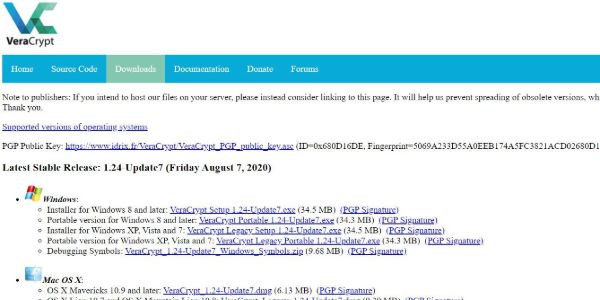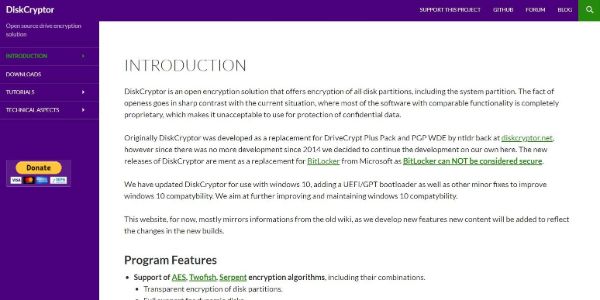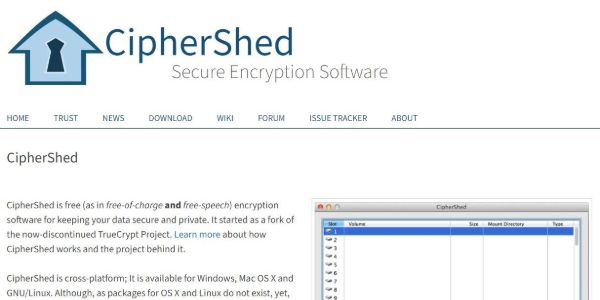TrueCrypt was once the gold standard for encrypting sensitive files, external drives, and entire systems. However, in 2014, the platform discontinued its services due to security concerns, the end of Microsoft’s support for Windows XP, and the need for a significant codebase rewrite.
Today, strong encryption is more important than ever as data breaches, ransomware attacks, and surveillance threats continue to rise. Therefore, it is better to choose a reliable service to encrypt your data online.
Fortunately, several modern encryption tools like TrueCrypt now offer stronger security, active development, and better compatibility across devices. In this guide, we’ve rounded up the top alternatives to TrueCrypt so you can protect your data with reliable, open-source, and highly secure options designed for today’s threats.
Quick list of TrueCrypt alternatives
Short on time to read the full guide? Don’t worry. Let’s begin with encrypting your data with these TrueCrypt substitutes.
- Veracrypt – an open-source Truecrypt fork available for free.
- Bitlocker – a full-disk encryptor limited to Windows only.
- DiskCryptor – a free and open-source tool offering fast encryption.
- CipherShed – a Truecrypt fork offering multi-platform support
- Axcrypt – a freemium encryption resource with user-friendly features.
What is TrueCrypt?
It is encryption software that lets you encrypt your data on the fly. It creates a virtual encrypted disk within a file folder, making it an effective folder encryption and full disk encryption software.
However, the software was discontinued around five years ago due to multiple unaddressed security issues. Even though the encryption tool can still be downloaded, the website warns users that it is no longer secure and is not officially supported on modern systems like Windows 10.
Being an open-source software, TrueCrypt’s code was accessible to many developers who could modify it or create new versions. These modified versions, known as forks, may provide improved security features and support for modern operating systems for users who are looking for an alternative to TrueCrypt.
What went wrong with TrueCrypt?
Most recognize TrueCrypt as a fantastic free and open-source hardware encryption utility. The project surfaced online in 2004 as a standalone real-time encryption tool.
However, it did not make it past its 10th anniversary as the developers discontinued it in 2014. But no one knows the reason(s) behind it because the developers had remained anonymous and made no further announcements in this regard.
TrueCrypt’s ability to build encrypted partitions on any provided hard drive made it popular. Also, companies would use it to create virtual encrypted disks that reside in a given file.
Moreover, the tool offered diversified compatibility with almost all popular operating systems, such as Windows and macOS.
Some people hold Google’s Project Zero security team responsible for the end of TrueCrypt’s reign. The team found numerous security bugs unknown to the public in TrueCrypt’s encryption algorithm.
Nevertheless, a 77-page study from the Fraunhofer Institute for Secure Information Technology in 2015, which conducted a systematic audit of TrueCrypt’s latest stable version, found the software fit to encrypt specific drives, specifically data encryption on an external hard drive or USB drive.
It means the encrypted data is reasonably secure if present on an external hard drive. However, it was not given the green light if the encrypted data remained on a fixed drive or the system’s main memory.
Anyhow, the bottom line is TrueCrypt is gone. It is no longer being maintained or patched for bugs. This makes it possible to retrieve the key from the unmounted drive and use it to decrypt data.
Moreover, the developers no longer provide the source files. You can now only download it through unofficial piracy sites. However, doing so has its own risks, such as exposure to corrupted or malicious files.
5 best TrueCrypt alternatives

1. Veracrypt
VeraCrypt can manage anything you throw at it; it is free, open-source, and multiplatform. It is a fork of TrueCrypt. (A project fork occurs when programmers copy the source code from a specific software platform and start working independently on it, making a new software piece.)

VeraCrypt works on AES (Advanced Encryption Standard), Twofish, and Serpent encryption ciphers to protect your data. It allows full disk encryption, device drive encryption, and encrypting volumes within volumes.
The tool works on all operating systems and their versions. It is one of the best alternatives for Apple fanatics.
VeraCrypt is marginally slower in terms of starting and opening containers than TrueCrypt. But it does not hinder the use of apps anyway. You can navigate through Veracrypt’s official website to read over all the latest features it provides. There is also a separate page where the VeraCrypt team explains how different their app is from TrueCrypt.
The most significant security enhancement in VeraCrypt is its strengthening of the PBKDF2 (Password-Based Key Derivation Function 2). TrueCrypt used only 1,000-2,000 iterations to derive an encryption key from your password. VeraCrypt uses 327,661 iterations for system partitions and 655,331 for standard containers.
This dramatically increases the time and computational power required for a brute-force attack, making it exponentially more difficult for an attacker to guess your password, even if they have your encrypted container.
Veracrypt is the versatile go-to option for keeping sensitive files and data secure or encrypting the whole system. It can manage volume and on-the-fly encryption so only approved users can access it, making VeraCrypt the most popular software.
2. BitLocker
BitLocker is Microsoft’s very own encryption tool. However, it is not open-source and only runs on Windows Ultimate, Pro, or Enterprise versions.
Just like VeraCrypt, BitLocker also supports advanced encryption standards. It mainly supports full-disk encryption to protect your entire computer, not just individual files. It also encrypts a virtual drive or other volumes you can view and access like other drives on your computer.
One downside of BitLocker is that not everybody can access the Windows models of Pro or Enterprise, making BitLocker a no-hope for many. If you have Home versions for Windows, you would have to give up the thought of using Bitlocker altogether.
3. DiskCryptor
DiskCryptor, much like TrueCrypt, is a free, open-source file and drive encryption program. As with TrueCrypt, DiskCryptor encrypts all your data and system drives alongside other external devices, such as CD and USB drives.

DiskCryptor bears striking similarities to TrueCrypt – thanks to an anonymous TrueCrypt user who initiated this project as an alternative.
Although, like TrueCrypt, DiskCryptor was also seemingly discontinued in 2014. However, it later resumed in 2020 and is now actively maintained. (Though it remains unclear if the new maintainer is the same or related to the original developer.)
Anyhow, you can also download it through SourceForge.
DiskCryptor is incredibly fast and convenient to use. It does not use much computing power and encrypts files faster than TrueCrypt does. Like VeraCrypt, DiskCryptor encrypts your data with multiple encryption algorithms, including Advanced Encryption Standard, Serpent, and Twofish, for increased security.
The main downside to DiskCryptor is that while it is open-source, close to no individuals or organizations have conducted any notable security analysis.
4. CipherShed
CiperShed had its humble beginnings as a fork of TrueCrypt. It supports operating systems like Windows, Linux, and macOS. Although to use it on Linux and Mac, you must compile the program.

The first non-alpha version arrived in February 2016. After its initial release, CipherShed’s progress has noticeably lagged compared to VeraCrypt, since there was no official major release, such as v1.0. Even after years, the current CipherShed version still appears as v.0.7.4.0.
Despite its slow growth, cipherShed offers most, if not all, resources close to VeraCrypt.
5. Axcrypt
Next on our list of TrueCrypt alternatives is an open-source, cross-platform per-file encryption software that secures files by supporting AES and requires zero configuration.
While Windows users can enjoy a free version, users with macOS must get a premium edition, retailing at USD 35 annually.

To encrypt a file using AxCrypt, right-click on it and pick the encrypt option. And voila! The tool will automatically encrypt your file with AES–128-bit encryption. This is the most straightforward encryption software to use amongst all those mentioned in this list.
This also means that Axcrypt does not provide the feature of full-drive encryption.
Another major downside to using AxCrypt is that you miss out on cross-platform compatibility if you avail of the free version. However, you can solve this by opting for the premium version with a 30-day free trial.
Factors to consider when choosing TrueCrypt alternatives
- Price: One factor to consider when choosing a TrueCrypt alternative is the cost of the software. Some encryption software options may be free or have a lower cost than others, making them more appealing to users on a tight budget.
- Usability: Ease of use of encryption software is another important factor to consider. The software should have an intuitive interface that is easy to navigate, even for users with limited technical knowledge. Additionally, it should offer features that are easy to configure and use, such as automated encryption and decryption.
- Security: Security is perhaps the most critical factor when choosing encryption software. The software should use robust encryption algorithms and have a proven secure track record. It should also offer additional security features, such as two-factor authentication and file shredding, to protect sensitive data from unauthorized access.
- Cloud storage sync: Although TrueCrypt did not have this feature, cloud storage sync has become a vital aspect of modern encryption software. The software should be able to not only store encrypted files in cloud storage folders but also be ‘cloud-storage conscious.’ This means that it can automatically identify and synchronize folders from popular cloud storage services such as Dropbox, as well as other relevant folders on the user’s device.
Top 3 encryption methods
Before moving on to the Truecrypt alternatives, let’s quickly look at the basic data encryption methods these tools apply to secure your data.
1. Full-disk encryption
Many operating systems store temporary files/swap partitions on hard drives. Because these files hold confidential data, potential compromises here can give rise to various issues.
Thus, encrypting the entire hard drive is a quick solution to avoid this problem. Full Disk Encryption (FDE) methods, often known as “On-Disk Encryption” or “Complete Disk Encryption,” operate by encrypting every single piece of data on a storage system that exists.
The full-disk encryption method usually encrypts the entire content of a disk or volume. It then decrypts/encrypts it after a key has been issued during usage. This ensures the data remains safe under any circumstances, such as the laptop/disk failure or hacking attack, where the data gets encrypted, and you need a key for decryption.
However, this type of encryption makes your data vulnerable to online threats. It means that if the device is logged in or the data is being sent through an email, you cannot provide any form of encryption.
2. Single-user file/folder level encryption
Most encryption programs are capable of creating an encrypted internet drive. This is what folder-level encryption does. It creates a virtual disk, an encrypted file that looks like any other drive on your device. This allows the user to open and transfer files in an encrypted region easily.
This encryption method protects a single file and folder rather than your whole disk. For example, you can use it to protect a specific folder containing sensitive information that only you can access in the case of a hacking attack or device theft.
3. Multi-user file/folder level encryption
Like single-user file encryption, multi-user file/folder-level encryption also creates a virtual drive to keep encrypted files. The only difference is that this encryption mode allows multiple users to access encrypted information simultaneously.
However, you need to be careful when using this method. This methodology becomes complicated if not all users have the encryption program installed. In addition, any errors here may cause users to access encrypted data or make them think they have encrypted information when they have not.
The types of encryption most widely known and used are:
Using a VPN for encrypting transit data
Is disk encryption enough to secure your files sent via email? The straightforward answer is No.
Disk encryption protects your data only while it resides on your device or hard drive, but does not secure it when transmitted over the internet. So you need a VPN (Virtual Private Network) for that.

Using a VPN encrypts your data in transit, thereby making it indecipherable to intruders. Hackers typically use a network sniffer to sniff networks for usernames and passwords, which means your data is at risk of theft at all times. However, by using a VPN, you ensure the security of your data.
A VPN operates by redirecting your system’s internet connection through your chosen VPN server instead of letting it go through your ISP. Hence, your data appears to be transmitted from the VPN instead of your system. For example, you could be in the United Kingdom and using an IP address found in the United States. Basically, by adopting a VPN, you are hiding in plain sight.
Nonetheless, bear in mind that not all VPNs are equal. Different services offer various speeds, capabilities, or vulnerabilities depending on their protocols.
Therefore, you should only use a VPN tested for security. Pick a VPN service provider that supports VPN protocols like IKEv2, SoftEther, and OpenVPN and ciphers like Camilla and AES. You may also idealize VPNs that offer handshake encryption, such as RSA-2048, and authentication encryption, over 256 bits.
To save time and energy, check out this guide listing the 10 best VPNs. It features the top secure and reliable providers out there. Of course, you are welcome and encouraged to do your very own research before settling on a VPN.
FAQs
VeraCrypt is generally considered a more secure and feature-rich alternative to TrueCrypt. This is because it is based on the TrueCrypt source code but has undergone extensive security improvements and bug fixes since TrueCrypt was discontinued. Compared to TrueCrypt, VeraCrypt uses 30 times more iterations when encrypting containers and partitions. This results in a longer startup time for partitions and opening of containers, but it does not impact the usage of applications once they are opened. Moreover, VeraCrypt is an active and regularly maintained open-source project, whereas TrueCrypt has not received updates in several years. As a result, VeraCrypt is generally considered a better choice for users looking for reliable and secure encryption software.
TrueCrypt is no longer considered the best encryption software available due to its discontinuation, lack of updates, and unfixed bugs. While it was once a popular choice for encryption, it is no longer recommended for use as now more advanced and secure alternatives are available, such as VeraCrypt. This is considered to be one of the best encryption options available. It offers unparalleled flexibility regarding encryption and storage options, allowing users to customize their encryption approach to suit their needs. Furthermore, VeraCrypt boasts several innovative features that set it apart from other encryption software options.
While there have been no official reports of TrueCrypt being officially cracked or compromised, several security vulnerabilities were discovered in the software after it was discontinued. These vulnerabilities could potentially be exploited by attackers to gain access to encrypted data.
There is no definitive evidence that TrueCrypt has a backdoor. Still, some security experts have raised concerns about the possibility of a hidden vulnerability or weakness in the software’s code that could potentially be exploited by attackers. Independent researchers can review TrueCrypt’s publicly available source code to confirm whether it includes undisclosed “backdoors.”
